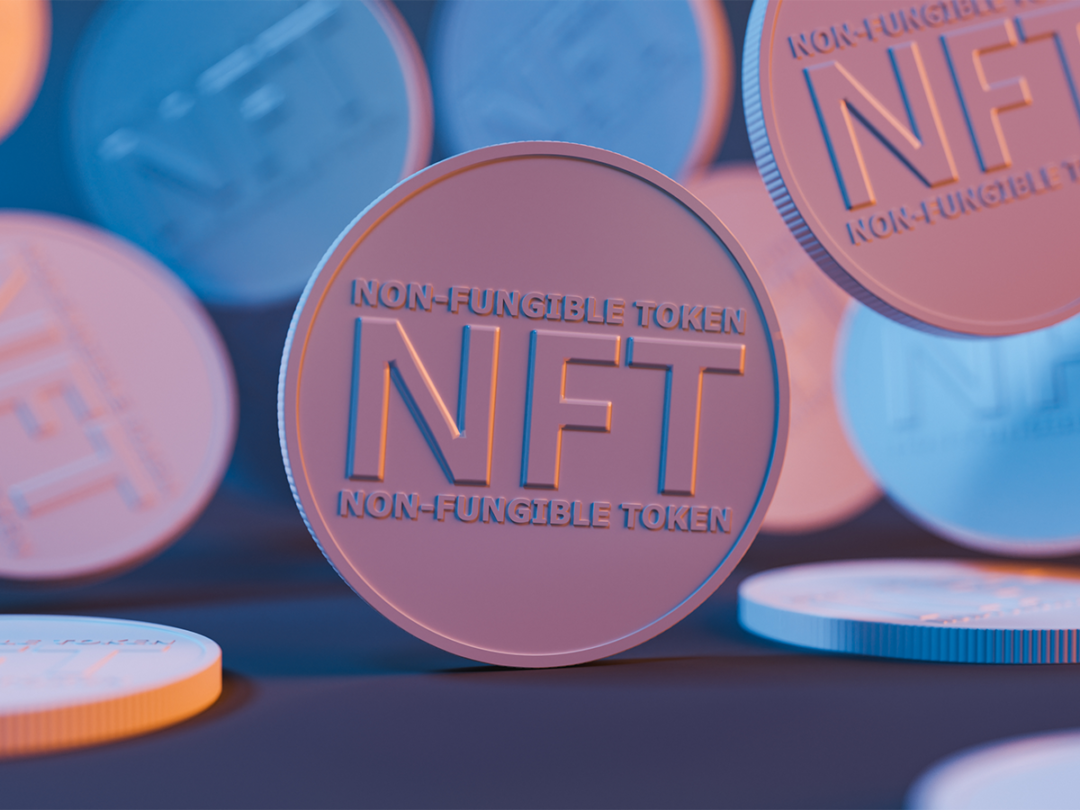
Think Tank
Can NFTs Be an Effective Tool for Supply Chain Visibility?

A 3D illustration of non-fungible tokens (NFTs). Dragos Ciobanu/ Canva.
To date, the stampede for non-fungible tokens has largely centered on the “ownership” of images, works of art and similar kinds of digital files. So what does this latest manifestation of the virtual universe have to do with the everyday reality of supply chain management?
An NFT is essentially a string of code that entitles the buyer to supposedly exclusive ownership of the digital asset it represents. (“Supposedly,” because possessing the NFT that’s linked to a work of art or piece of writing, say, doesn’t necessarily mean the buyer owns the work’s copyright. And, for images that are available online, the purchased work often continues to be accessible for viewing by everyone — even if they don’t “own” it.)
One might think, therefore, that the hazy nature of NFTs and their questionable relationship to the real world would disqualify them from use in the movement of physical materials and products around the world. But Shlomi Amouyal believes that isn’t so.
The chief technology officer of Verte, seller of an e-commerce platform for omnichannel retailers, thinks NFTs have an important role to play in providing transparency into the status of products throughout the supply chain. That’s especially the case, he says, for manufacturers operating under a “just-in-time” model for getting parts and components, sourced from multiple suppliers, onto the assembly line. By being able to track the status of every part, they can anticipate and possibly head off disruptions to the production flow.
NFTs become viable instruments of supply chain visibility when combined with a blockchain, Amouyal says. Each NFT is a unique set of digital data that’s stored on a decentralized, distributed ledger. Blockchain advocates claim that the data in question is immutable, because it resides on so many nodes as to be secure from alteration by unauthorized parties.
The manager of an end-to-end supply chain can attach a unique NFT to each manufacturing order, with the data accompanying the physical goods for their entire journey, Amouyal says. It can include such details as the identity of a specific product, its origin, current location and condition, with information constantly being updated as the status and ownership of that item changes. As a result, “you know exactly which individual product you have, from the moment it’s manufactured and all the way to the customer.”
As with blockchain itself, many of the earliest applications of NFTs to the supply chain have involved high-priced luxury goods, which are especially susceptible to counterfeiting and theft. They could also prove valuable to producers of expensive materials for high-tech applications such as microprocessors and networking components.
Amouyal further sees the potential of NFTs in managing the complex returns process, with the ability to follow an item from the consumer back to a warehouse, then determine whether that item should be recycled, repaired, returned to the shelf, sold to discounters or destroyed.
Blockchain has been touted for years as a means of tracking and tracing goods throughout the supply chain. But NFTs add the ability – in theory, at least — to tag individual products with unique identifiers. “You could have hundreds of NFTs on the blockchain, with a different signature for each,” Amouyal says.
As applied to fast-moving supply chains, NFTs carry some of the same potential drawbacks as blockchain itself, including the time and cost required to post data; the need for “miners” to create the necessary blocks, in exchange for tokens or some variety of cryptocurrency, and the massive amounts of energy required to carry out that activity.
Indeed, Amouyal acknowledges, the mining process is based on “proof of work,” whereby aspiring miners are required to solve brutally difficult mathematically equations, collectively using more energy than that consumed by entire countries. (The subsequent validation of NFTs, by contrast, is based on “proof of stake,” a far less energy-intensive process, he notes.)
None of these concerns will prevent NFTs from eventually playing an important role in global supply chain management, Amouyal believes, although they’re a long way from seeing full adoption by most companies. “I believe they still have more mileage to be formalized and adopted by industry,” he says.






